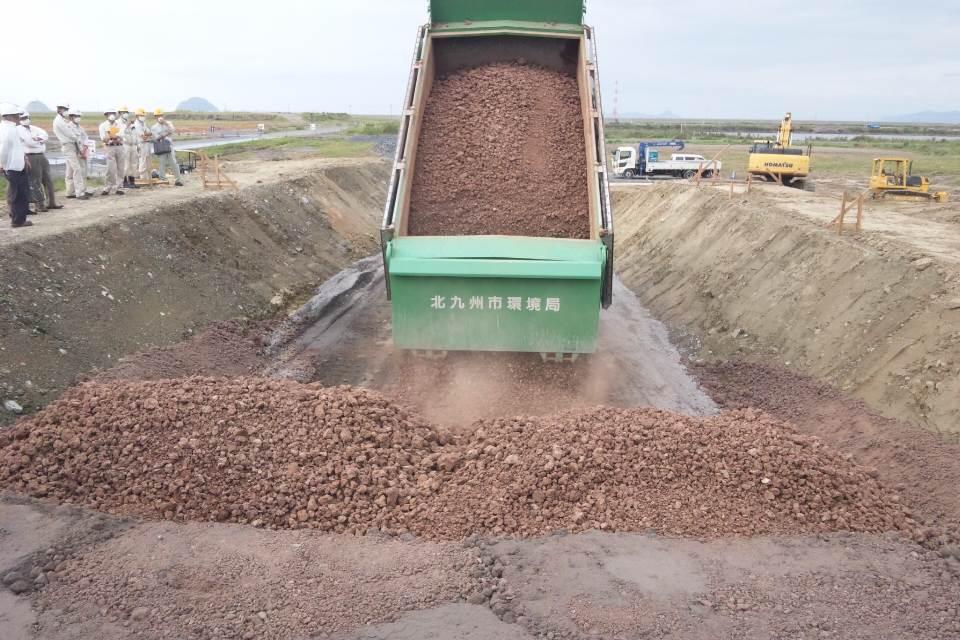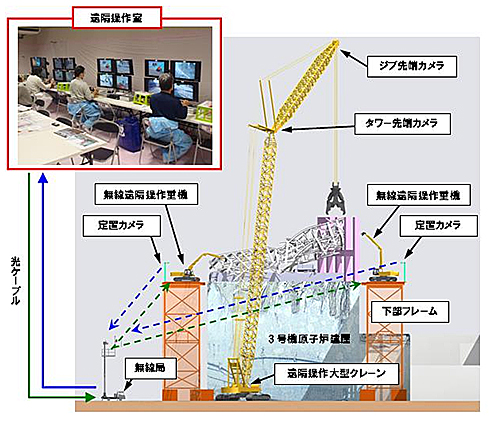"Wag the dog" is working splendidly in Japan, as the media focus is solely on the small piece of real estate in the ocean (plus natural resources under the ocean, amount of which seems nowhere near the initial estimate, by the way). As they start the burn of disaster debris from Miyagi Prefecture in Kitakyushu City, first ever of such a burn west of Shizuoka Prefecture (which is located about the middle of the archipelago), only a smattering of newspapers cover the event, and none of them mentions continued strong opposition by residents in the city (and far greater number of Japanese citizens/residents outside the city), and local fishermen (the ashes are to be quickly buried in the landfill in the bay).
Here's one from Mainichi Shinbun, who buried the article in the local version of the paper; it tells us two incredible and frustrating pieces of information:
As soon as they started burning the disaster debris contaminated with radioactive materials from the nuclear accident, the Kitakyushu City government started the monitoring of the Internet for any negative comments about city's burning and burying to prevent "baseless rumors";
Anonymous city official is quoted as basically saying "Maybe we shouldn't be doing this, but it was the national government's responsibility to tell us otherwise."
As I wrote in my previous post, there is no sensible reason to bring the debris all the way to Kyushu and burn it, because, for one, there is no debris technically that could be diverted to Kitakyushu City.
From Mainichi Shinbun (9/18/2012; part):
...がれき焼却に対する市民の不安を解消することが市にとっての今後の課題となる。3工場近くの空間放射線量などを市のホームページで公開するとともに、17日から風評被害対策としてネットへの書き込み調査を始めた。市は民間会社に調査を委託し、ネットの掲示板などをチェックする。観光や農水産物の風評被害につながりかねない根拠のない書き込みなどがないか調べるのが目的だ。しかし発見後、どのような対応ができるかは現段階では決まっていないという。
The task of the city from now on is to dispel fears among the residents over the debris burning. The city will publish the data on air radiation levels near the three incineration plants on the city's homepage, and since September 17 it has been monitoring the Internet for messages as the countermeasure against baseless rumors. The city has contracted a private business, who will check the Internet message boards. The purpose is to see whether there are baseless messages that may lead to rumors that may damage tourism and agriculture and fishing industries [in Kitakyushu City]. However, it hasn't been decided at this point how to respond to such a message, if found.
市は17日の焼却開始後、3工場で敷地境界4カ所の空間放射線量を測定。毎時0・05〜0・09マイクロシーベルトで焼却前と変わらず、この結果を受けて、市は「安全性に問題ない」としており、18日からは同市若松区の響灘西地区廃棄物処分場で焼却灰の埋め立てを始める。
After the incineration on September 17, the city measured the air radiation levels on the perimeters of the three incineration plants; the levels were between 0.05 to 0.09 microsievert/hour, unchanged from before the incineration. Based on these measurements, the city says "There is no problem with the safety", and will start burying the ashes in the landfill in the city's Wakamatsu-ku.
ただ、がれきの広域処理の必要性については疑問の声も上がる。宮城県が「処理のめどがついた」として可燃物の新規受け入れ要請をやめるなどし、北九州市に続く自治体がほぼ消えたからだ。また、輸送費を含む処理コストが1トン当たり約7万7000円と、環境省が示す目安(約3万〜7万円)より高いこともあり、反対派は「高い金をかけて広域処理する必要があるのか」と指摘する。
However, some doubt the necessity of wide-area disposal of disaster debris. Miyagi Prefecture has stopped requesting for the acceptance of the flammable debris [that's what Kitakyushu is getting] because the prefecture can now do it on its own, and there are hardly any municipalities following Kitakyushu City [in accepting the debris]. Also, the processing cost is about 77,000 yen per tonne, higher than the cost suggested by the Ministry of the Environment (30,000 to 70,000 yen). People who oppose [the wide-area disposal] ask, "What's the point of spending that kind of money to do the wide-area disposal?"
全国の自治体に協力を求めた環境省は「処理は早く終わった方が良く、要請当時は(全国に求めるのが)必要という判断だった」と説明するが、市の幹部は「国のコントロールがもう少しあっても良かったかもしれない」と話す。
The Ministry of the Environment, who requested the cooperation from all municipalities in Japan, now explains, "The sooner the debris disposal is done the better, and at the time of our request we thought it was necessary (to ask all municipalities in Japan)." The senior officials in Kitakyushu City now says, "It may have been better if the national government had exerted a little bit more control [over the issue of wide-area disposal]."
Most of the cost of disposing the debris in Kitakyushu City is the transportation cost, which will be paid out of the pocket of Japanese citizens/residents to Kajima, who will do the transport by container ship. (Talk about regulatory capture, on which Japan is the world number one expert.)
Besides, what the Ministry of the Environment is not telling you is this: At the time when the Ministry decided to spread the debris all over Japan, they weren't aware that the debris were contaminated with radioactive materials from Fukushima I Nuclear Power Plant. It apparently never occurred to them, and they went ahead with the plan of wide-area disposal, which had been in place long before the disaster happened.
Looking at the debris, the concern should be more about chemical and heavy metal contamination (from tsunami) and asbestos. But then, the severe environmental pollution from these substances is what Kitakyushu City has been subjected to and familiar with, ever since the first furnace was built and installed in the city in the late 19th century by the central government.
After a year and half since the start of the nuclear accident, only the bureaucrats and officials in national and municipal governments who still think they can measure the radiation contamination by waving a survey meter over the debris (or food, for that matter). I still see occasional, exasperated tweets from the radiation researchers in the universities that their job would be so much easier if a survey meter could tell them the density of radioactive materials in any given item.
But not to worry. As Mainichi article says, the city is already burying the ashes in the city's landfill on the ocean, with this reassuring photo coming from Kokura Times, newspaper in Kitakyushu City (click to enlarge):

According to Kokura Times, the city is paying the private company 12 million yen (US$152,000) to monitor the Internet message boards and report back to the city of the findings. I suppose the city's mayor who bullied the opposition will send the invoice to Goshi Hosono, who will promptly pay with the taxpayers' money.
(Put these bureaucrats all in the containers, ship the containers back to Tohoku, but instead of sending them back to Ishinomaki City, send them to Fuku-I. All the toxic, deadly materials should be in one place.)













 Tokyo Time
Tokyo Time
![[Most Recent Quotes from www.kitco.com]](http://www.kitconet.com/charts/metals/gold/t24_au_en_usoz_2.gif)

